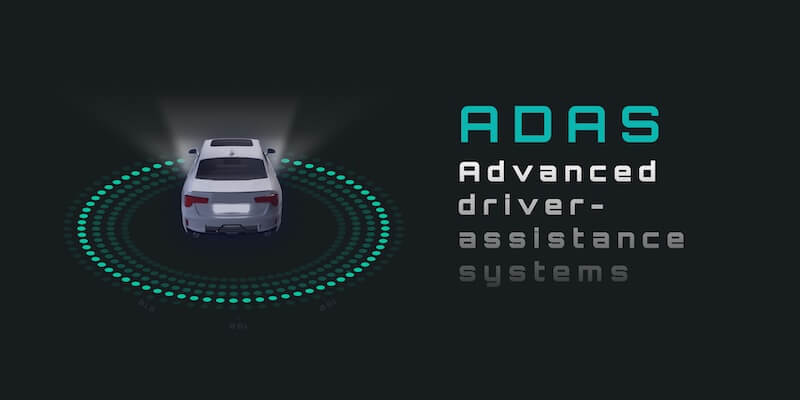Modern vehicles are smarter than ever. From blind spot warnings to automatic emergency braking, today’s cars are equipped with Advanced Driver Assistance Systems—better known as ADAS. These technologies are designed to keep you safer on the road by helping to avoid collisions before they happen. But here’s the catch: after an accident, even a minor one, these systems can be thrown off. And if they’re not recalibrated properly, they might not work when you need them most.
At OHS Body Shop, we see more and more vehicles every day that come in for collision repair and require ADAS recalibration. The systems are sophisticated, but they’re also sensitive. Just a slight misalignment can mean a lane departure warning doesn’t trigger, or the automatic braking activates too late—or not at all. In a place like Montana, where deer crossings, icy roads, and long rural highways are common, having those systems working correctly can make all the difference.
So what exactly is ADAS recalibration, and why should you care about it? Let’s walk through it together.
ADAS includes all those features your car uses to “see” the world around it—radars, cameras, ultrasonic sensors, and laser systems. These sensors are typically mounted behind the windshield, on the front grille, rear bumper, side mirrors, and even in the corners of your car. They’re connected to computers that process the data in real time, triggering safety functions like forward collision warning, adaptive cruise control, and lane keep assist.
Now imagine you get into a front-end collision. Even if it’s just a parking lot tap or a low-speed impact, that sensor sitting behind your grille could be knocked out of alignment by a few millimeters. That’s all it takes to completely throw off the system. Suddenly your car thinks you’re closer to another vehicle than you actually are, or worse, it doesn’t see a vehicle that’s right in front of you.
And it’s not just accidents that can cause this. Replacing a windshield or even realigning the suspension can affect ADAS calibration. That’s why recalibration is such an important part of post-collision repair—and one that not every shop in Montana is equipped to handle.
At OHS Body Shop, we use specialized tools and procedures to recalibrate your vehicle’s sensors to the manufacturer’s original specifications. Depending on your vehicle and the system, that could mean static recalibration (done while the vehicle is stationary) or dynamic recalibration (done while driving with diagnostic equipment). Sometimes both are required.
We also use OEM-specific calibration targets and diagnostic computers to ensure your ADAS system functions exactly the way it did when the vehicle left the factory. Our technicians receive ongoing training to stay current with new vehicle technologies because these systems are evolving fast. What worked for a 2020 vehicle may not apply to a 2023 model—even from the same manufacturer.
We often get asked, “How do I know if I need recalibration?” The truth is, if your car has any kind of ADAS feature—and most vehicles made in the last 5–7 years do—there’s a good chance recalibration is necessary after any significant repair. If a sensor was removed, replaced, or even slightly moved, you’ll want it checked. Some systems will alert you via a dashboard warning. Others won’t say a word, even if they’re not functioning properly. That’s why we include an ADAS assessment with every qualifying repair.
Now, we know this can sound a little intimidating—and maybe even like one more thing to pay for. But let’s be clear: this isn’t a luxury or an upsell. It’s a matter of safety. A misaligned radar sensor could cause your automatic braking to trigger at the wrong time—or not at all. A camera that’s one degree off might miss that motorcycle in your blind spot. These aren’t hypotheticals. We’ve seen it happen.
Montana drivers face unique challenges, too. You’re often driving long distances at higher speeds. There’s wildlife on the roads. Weather conditions change fast. You want your vehicle’s safety systems to be fully operational when it matters. That’s where we come in.
Our shop is one of the few in the region that offers in-house ADAS recalibration, meaning we can handle the full repair—from bodywork to system reset—without sending your vehicle elsewhere. That saves you time, keeps the process seamless, and ensures every detail is double-checked before you get back behind the wheel.
We’ve invested in the latest equipment because we believe every driver deserves not just a car that looks like new, but one that performs like it too—especially when it comes to safety. Whether it’s a minor fender bender or a major accident, recalibrating your ADAS sensors is something we treat as a standard, not an add-on.
So, if you’ve recently been in a collision, had a windshield replaced, or your car is behaving strangely with its safety features—maybe the backup camera’s off, or the lane assist is acting jumpy—don’t ignore it. Bring it in. We’ll run a full diagnostic check and let you know exactly what’s needed. No pressure, just facts.
At OHS Body Shop, we’re proud to serve Kalispell and the wider Montana community with repairs that go beyond the surface. We believe safety starts with precision—and that means making sure every system, from your frame to your front sensor, is dialed in perfectly.

